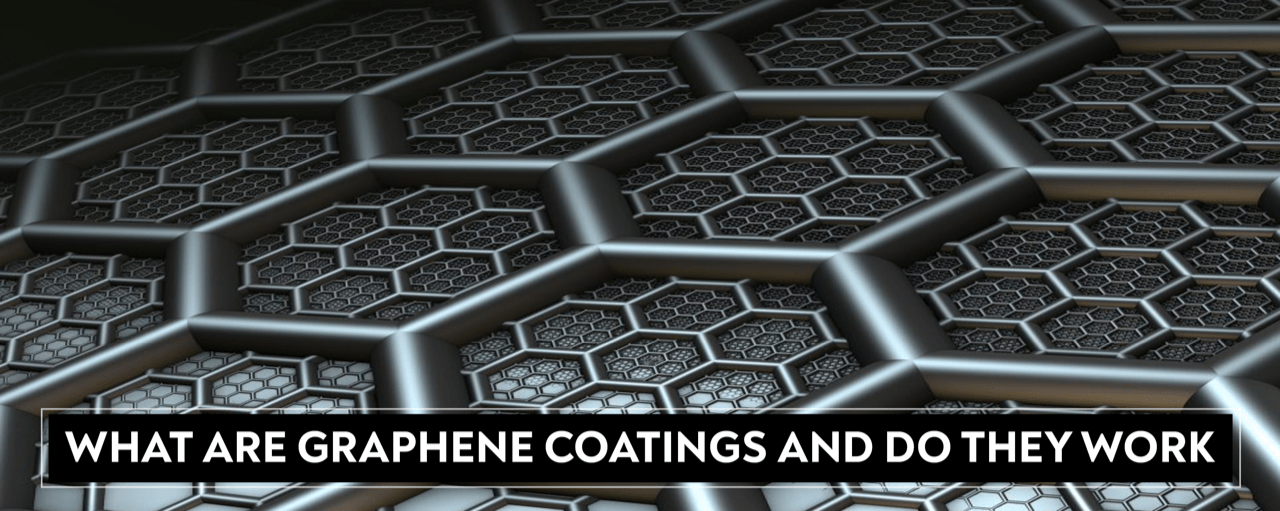FREE US SHIPPING ON ORDERS $75+ (LOWER 48 STATES)
FREE DETAILING ADVICE +1-877-838-2672

Today’s technology has afforded us many different types of components to protect the surface of your vehicle or clearcoat painted surfaces. Unfortunately, the market has also confused many of us by carelessly throwing around terms like “ceramic, ceramic coatings, graphene coatings, and even graphene ceramic coatings. As it turns out, some of these terms don’t really identify many of the products behind the terms and often you’re left with an inferior product that makes somewhat bogus claims about how it protects a treated surface. In fact, the term “graphene” is somewhat of a hyped-up buzzword that is often used as a marketing ploy.
Ceramic vs. Graphene
Our goal is to clear the air and hopefully settle the recent hype and hysteria surrounding ceramic coatings versus alleged graphene coatings. At the same time, we understand how some legitimate and trusted detailing companies have their own specialized marketing terms to describe their products, and we respect such. However, we’ve recently noticed that some terms, one in particular, have been nothing more than a buzzword and often misapplied with other well-known terms in the detailing industry, and that’s the term “Graphene.”
There are countless ceramic coatings on the market currently, some of which are legitimate and are safe to use the “ceramic” description without issue. On the flip side, some ceramic coatings are inferior and many times such products are found out and their bluff is called through simple tests and reviews of their products. When it comes to the term ‘graphene,’ there’s a lot of confusion where some will claim that graphene products are just another ceramic or a form of ceramic coating. There’s where we have a serious problem!
Graphene, or graphene coating, is simply a buzzword with no real conclusive data offering its claimed superiority over other coatings, such as ceramic. Many detailing products have taken the term ‘graphene’ and turned it into a hype word to describe an ‘evolution of ceramic coating technology,’ which is also a bogus claim.
What exactly is Graphene?
Graphene is in fact a term to describe graphite, which is in an allotrope of carbon, which is a key element for life on earth and the sixth-most abundant element in the universe. Graphite is not found on the periodic table but is essentially a form of carbon. We may commonly find graphite as the element (the lead) in a pencil – even though it is not lead, which was never really used in a pencil as real lead. So, why not tout the idea of having a graphite, or graphene coating that’s claimed to be superior to ceramic having a claimed 9H hardness in some applications? Because it makes for good press or a way to spice up a detailing product that makes bogus claims of being the ultimate in protection or new evolution to ceramic that’s better than ceramic. More than likely that the graphene product you’re buying has an assortment of other harmful chemicals and a little carbon thrown in for good measure so they can call it “graphene.”
The problem with Graphene coatings and Graphene detailing products
Why not say that you have a new graphene product that’s supposedly taken the properties of ceramic and made them better? Technically, ceramic coatings are already as good as we’re going to get using today’s technological advancements to offer the best in a sealant that lasts for many years. We hate to break it to you, but graphene coatings are a cheap way of saying that your product has some traces of carbon in them but they are not any more effective as a trusted and proven ceramic coating product. Interestingly enough, many manufacturers or resellers of detailing products make claims to graphene being superior to ceramic because it supposedly has better bonding agents and has a hardness of about 9H, which a such a hardness it would effectively break off or flake off if that is the case. That’s like coating your vehicle with a thin layer of glass – it can’t bend or flex and therefore will eventually crack and break off.
We all like to hear those cool terms like carbon fiber, carbon ceramic, and now, graphene. We do a little research and find out that graphene is just as cool as carbon fiber because it’s a form of carbon. Cool right? Actually, you’re going to want to be careful in buying your next product that uses the graphene term because it may be a fluff word in an attempt to offer something that’s better than ceramic, which we don’t have readily available outside of industrial applications.
Fundamentally, it all comes down to the fact that the ceramic coating industry is so flooded that clever marketers, manufacturers, and resellers, started marketing the term Graphene to trick others into believing that there is some magical form of ceramic that’s better than “ceramic.”
So, the next time you find a graphene product, do a little homework, or at least think twice before you spend your hard-earned money on a potentially inferior product that’s using the latest and greatest hyped-up term. Not to mention, some of these new graphene products may cause more harm than good, especially if they are being sold by a reseller who has no clue about what harsh chemicals are contained in the new shiny bottle of “Graphene” coating.

We want you to be 100% satisfied with everything you buy from TopCoat. And if you’re not entirely happy with your purchase we will refund your money in full, or exchange the goods. All we ask is that you contact our customer services and then return the products back to us.